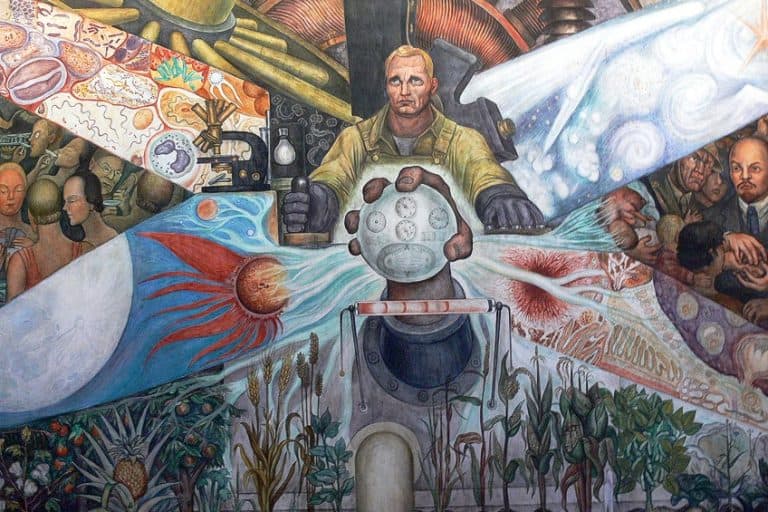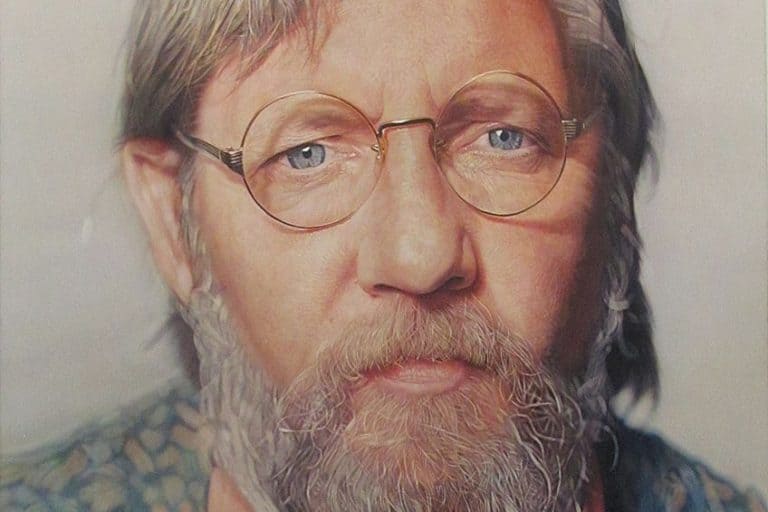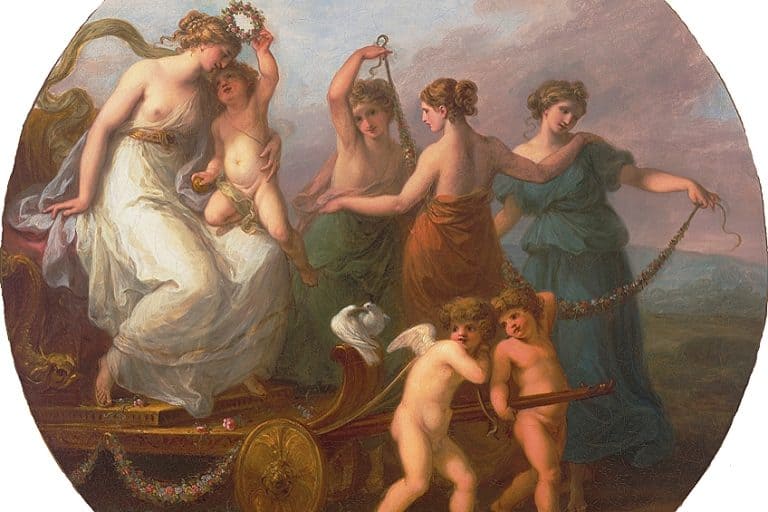Kiki Smith – A Look at the Life and Art of the Contemporary Artist
Exploring the captivating realm of contemporary art leads us to the distinctive and evocative creations of Kiki Smith. Renowned for her innovative contributions to the art world, Kiki Smith’s sculptures stand as remarkable embodiments of her unique vision and creative prowess. Delving into Kiki Smith’s biography unveils a journey marked by artistic exploration, self-discovery, and a deep connection with the human experience. In this article, we delve into the intricacies of Kiki Smith’s art, particularly focusing on the profound impact of her sculptures, while tracing the remarkable trajectory of her life and artistic evolution.
Table of Contents
- 1 Kiki Smith’s Biography
- 2 Kiki Smith’s Art: A Confluence of Socio-Political Currents in Germany and America
- 3 Unveiling the Artistic Craftsmanship: Technical Characteristics of Kiki Smith’s Unique Style
- 4 A Kiki Smith Sculpture: A Visual and Conceptual Analysis of Rapture (2001)
- 5 Frequently Asked Questions
Kiki Smith’s Biography
| Date of Birth | 18 January 1954 |
| Age | 69 years old |
| Place of Birth | Nuremberg, Germany |
| Nationality | German-American |
| Style | Contemporary art |
Born in Nuremberg, Germany, in 1954, Kiki Smith’s artistic journey began amidst a family of creative minds; her father was renowned sculptor Tony Smith (1912 – 1980). Growing up in a household saturated with artistic discourse, she developed an early affinity for creative expression. Smith’s formal training commenced at the Hartford Art School in the mid-1970s, where she honed her skills and embarked on her exploration of various mediums.
Her early artworks already showcased a penchant for combining the human form with elements of nature, a theme that would come to define much of her later work.
Major Career Achievements
As the 1980s dawned, Kiki Smith’s career gained significant traction. Her innovative approach to sculpture, often incorporating materials like glass, porcelain, and bronze, set her apart in the art world. A pivotal moment came with her participation in the landmark exhibition The Decade Show: Frameworks of Identity in the 1980s (1990), where she garnered attention for her thought-provoking pieces that examined issues of gender, mortality, and spirituality.
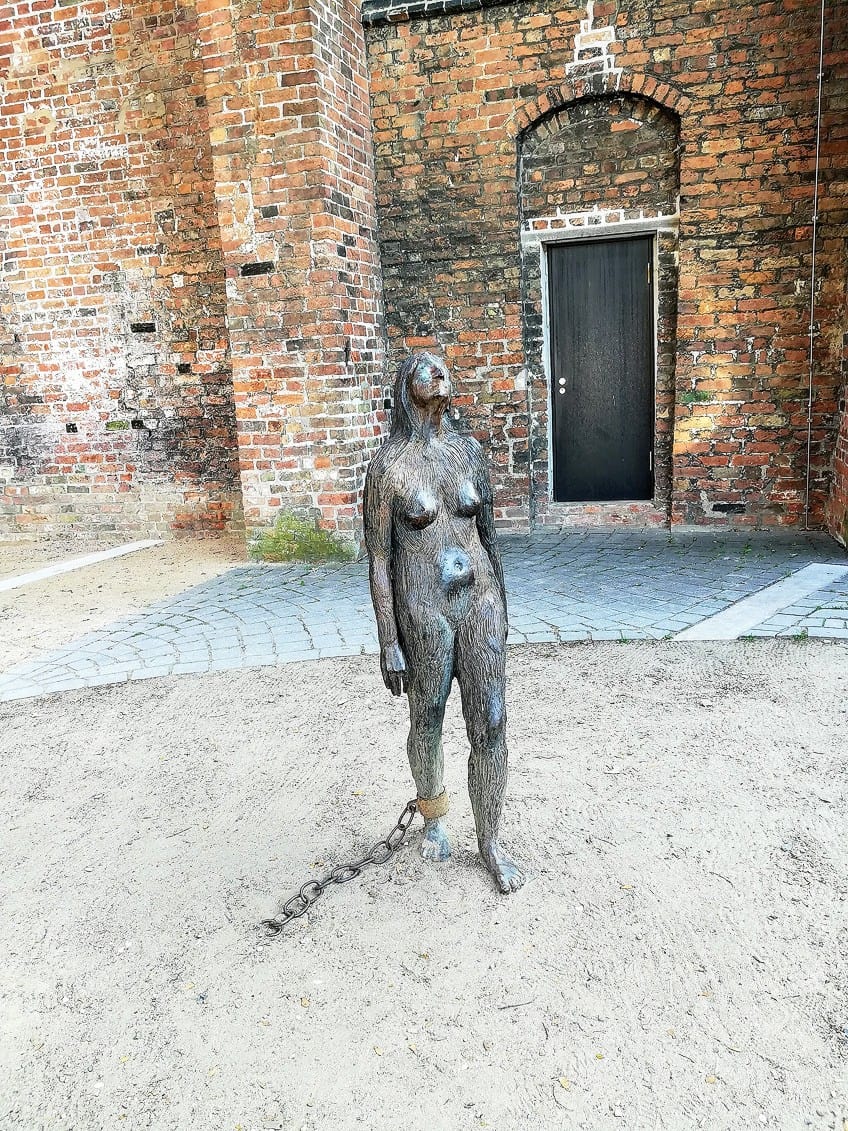
Smith’s engagement with these themes continued to deepen, leading to her iconic series of sculptures that melded the human body with animals, creating a powerful visual metaphor for the interconnection of all living beings.
Influence on Contemporary Art
Kiki Smith’s impact on contemporary art is immeasurable. Through her boundary-pushing sculptures, she dismantled traditional notions of femininity, body, and identity, sparking dialogues that reshaped art’s narrative. Smith’s work also resonated deeply with environmental concerns, fostering an increased awareness of the symbiotic relationship between humans and the natural world.
Her innovative techniques, such as employing unconventional materials and seamlessly merging fragility with strength, have inspired countless artists to experiment fearlessly.
Kiki Smith’s Art: A Confluence of Socio-Political Currents in Germany and America
Kiki Smith’s art is an embodiment of the intricate interplay between the socio-political landscapes of both Germany and America during the periods in which her creations emerged. Born in Nuremberg, Germany, in 1954, Smith’s early life was influenced by the complex aftermath of World War II, which deeply impacted the nation’s collective consciousness. Simultaneously, her later years in America coincided with pivotal moments in its history, shaping her artistic expression and thematic focus. Smith’s art acts as a mirror, reflecting the nuanced layers of these socio-political climates while challenging conventions and sparking vital conversations.
Post-War Germany: A Landscape of Reflection and Transformation
Smith’s childhood in Germany occurred against the backdrop of a country reckoning with its wartime past. The shadows of the Holocaust and the division of the nation were tangible influences on her artistic outlook. This environment contributed to the introspective nature of her work, which often delved into themes of identity, mortality, and the human body.

Her sculptures, with their vulnerable and exposed forms, seemed to grapple with the trauma of the past while striving for healing and renewal. This resonance with the broader German sentiment during her formative years demonstrates how Smith’s art was intrinsically linked to the nation’s process of confronting its history and striving for a brighter future.
America in Flux: The Struggle for Identity and Empowerment
Smith’s relocation to America in the 1970s marked a period of significant transformation in the nation’s socio-political landscape. The feminist movement was gaining momentum, advocating for gender equality and women’s rights. Against this backdrop, Smith’s exploration of the female body and its representation became a powerful statement of empowerment and reclamation.
Her sculptures challenged the male-dominated artistic canon, highlighting the multifaceted nature of womanhood and rejecting objectification.
Moreover, her work resonated with discussions around the environment and the interconnectedness of all living beings, a theme that gained urgency in the face of environmental activism and concerns about human impact on the planet.
Transcending Boundaries: Smith’s Art as a Universal Language
As Smith’s career progressed, her art transcended geographical boundaries, speaking to universal experiences and emotions. Her sculptures, often fusing elements of the human form with nature and animals, convey a sense of unity, echoing both the post-war German desire for healing and the American quest for connection amid societal shifts. In this way, Smith’s creations acted as bridges between the socio-political climates of the two nations, offering a language of expression that resonated across borders.
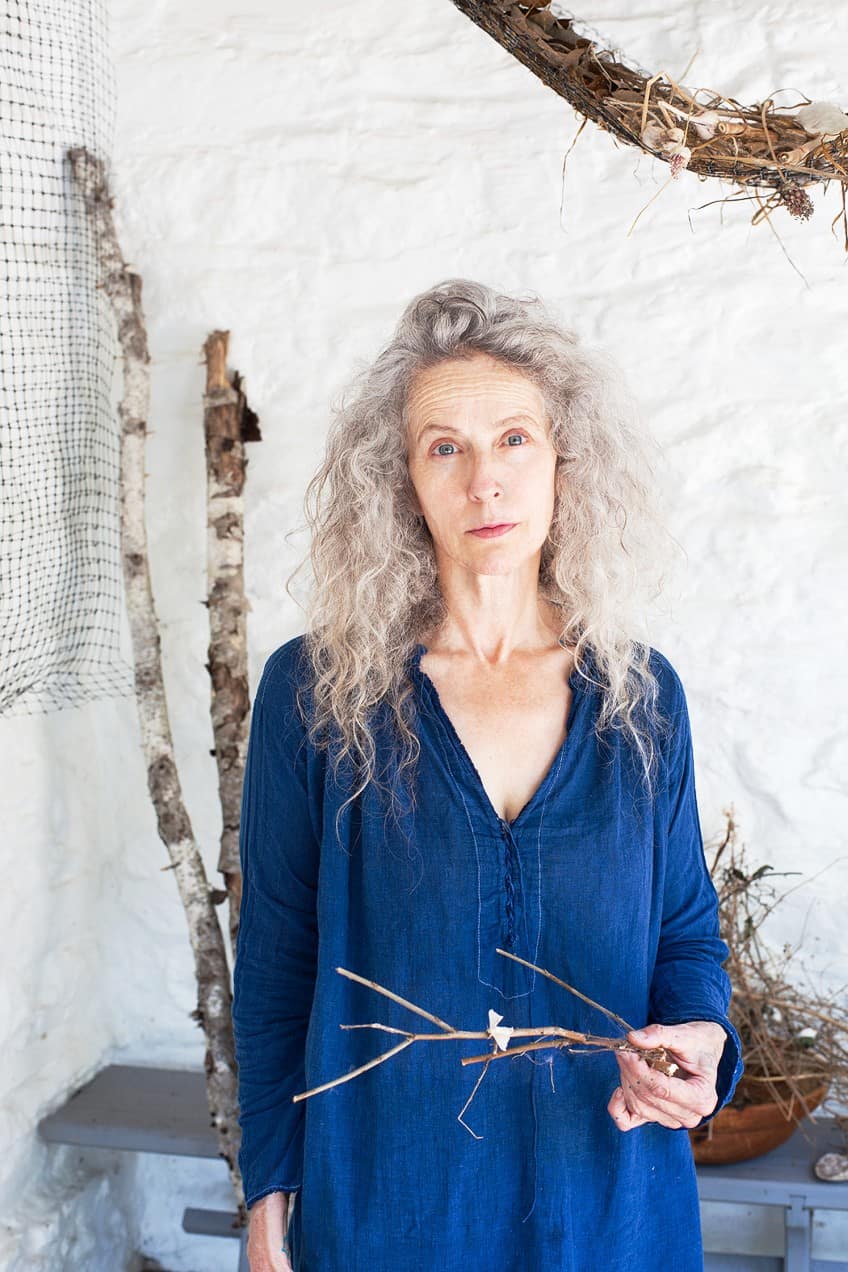
Unveiling the Artistic Craftsmanship: Technical Characteristics of Kiki Smith’s Unique Style
Kiki Smith’s artistic journey is a testament to her mastery of various techniques and mediums, showcasing a distinctive style that defies categorization. Her sculptures and artworks are a symphony of complex details, symbolic choices, and innovative approaches that have left an indelible mark on the contemporary art landscape. In this section of the article, we delve into the technical characteristics that define Kiki Smith’s unique style, shedding light on the elements that have contributed to her enduring legacy.
Exploration of Mediums: From Glass to Bronze
One of the hallmark features of Kiki Smith’s artistic practice is her seamless navigation across diverse mediums. Her versatility is evident in her choice of materials, ranging from fragile glass to sturdy bronze. This fluidity allows her to capture contrasting textures and engage with the interplay of fragility and strength. Smith’s sculptures often incorporate glass elements, creating delicate yet intricate forms that evoke a sense of transparency and vulnerability.
Simultaneously, her bronze sculptures exude a sense of permanence and weight, embodying enduring themes and emotions.
Subversion of Expectations: Material Conventions
Smith’s technical prowess is further exemplified by her inclination to subvert material conventions. She manipulates materials to challenge preconceived notions and evoke unexpected responses. Her sculptures might juxtapose the delicate with the robust, inviting viewers to reevaluate their assumptions about each material’s inherent qualities.

This manipulation serves to amplify the thematic undercurrents of her work, inviting contemplation on concepts such as the duality of human nature or the intricate relationship between the human body and the environment.
Ethereal Aesthetics: Embracing Imperfections
Smith’s artworks often embrace imperfections, blurring the lines between realism and abstraction. Her sculptures exhibit a rawness that is both captivating and haunting. She doesn’t shy away from representing the human body in all its vulnerability, often leaving traces of the artistic process visible in the final piece.
This willingness to embrace imperfections speaks to her deep engagement with the human experience, where flaws are as integral as strengths.
Metaphorical Layering: Symbolism and Narrative
Central to Kiki Smith’s artistic style is her deft incorporation of symbolism and narrative. Her sculptures are laden with layers of meaning, inviting viewers to engage in a multidimensional exploration. Animals, human figures, and hybrid forms populate her works, each holding symbolic significance that encourages reflection on themes of identity, mortality, and the natural world. The interplay between these elements forms a rich tapestry of storytelling that resonates on both personal and universal levels.

Fluid Boundaries: Blurring Realities
Smith’s artistic style often blurs the boundaries between reality and the surreal. Her sculptures have a transformative quality, inviting viewers to consider the spaces between the tangible and the intangible. By presenting figures in various states of existence, she challenges conventional perceptions of time and space, leading to a contemplative engagement with the transient nature of life itself.
A Kiki Smith Sculpture: A Visual and Conceptual Analysis of Rapture (2001)
| Title | Rapture |
| Date | 2001 |
| Medium | Bronze |
| Dimensions (cm) | 170,8 × 157,5 × 66,7 |
| Location | Monnaie de Paris, Paris, France |
Kiki Smith’s Rapture, a sculpture that has captivated audiences since its creation, stands as a testament to her ability to seamlessly blend the ethereal with the corporeal, and the intimate with the universal. This masterpiece, which Smith crafted in 2001, embodies her unique artistic style and profound exploration of the human experience.
Through a comprehensive visual and conceptual analysis, we delve into the intricate layers that compose “Rapture”, unraveling its symbolic resonance and its resonance with viewers.
Visual Harmony: Form and Material
At first glance, Rapture strikes the viewer with its delicate yet robust presence. The sculpture consists of a life-sized female figure stepping out of a wolf’s stomach. Smith employs bronze, a material often associated with permanence and strength, to create the figure’s body. The figure’s body is rendered with a smooth surface, contrasting with the rough texture of the wolf – this brings an element of fragility and sturdiness. The combination of smooth and textured forms a dialogue between the ephemeral and the enduring, inviting contemplation on the duality of human existence.
Corporeal and Celestial Union
The figure in Rapture is rendered with exquisite detail, showcasing Smith’s technical mastery. The sculpture’s realism, particularly in the rendering of the body’s musculature and physicality, invites a tangible connection with the human experience. Yet, it’s the figure’s transcendent gesture that elevates the artwork beyond the mundane.
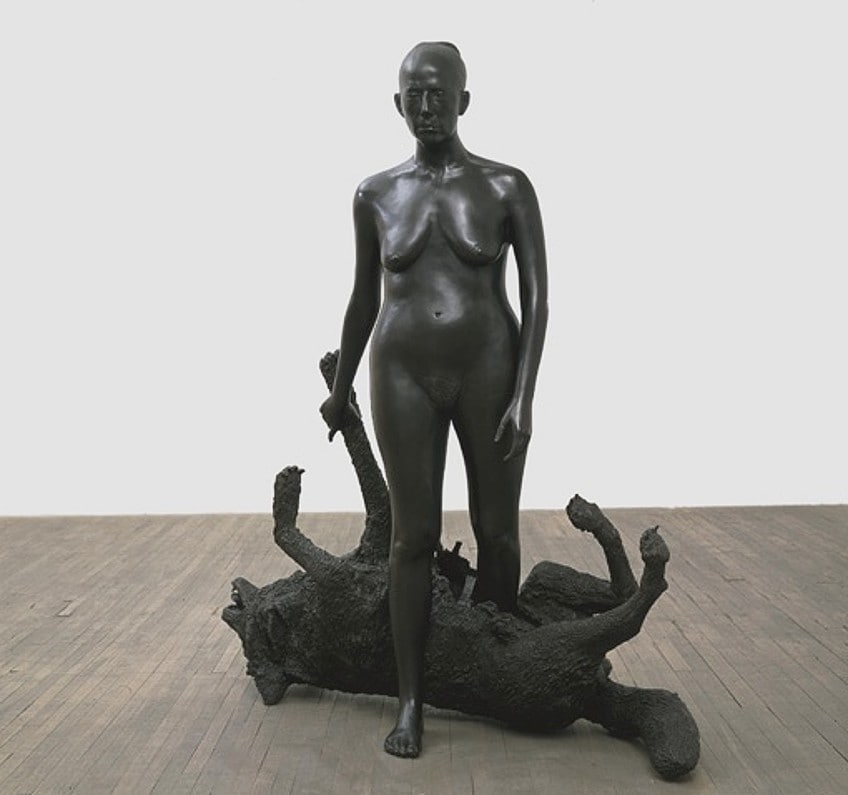
The determined and active pose of the figure had a sense of empowerment, suggesting a moment of spiritual or emotional emancipation. The interplay between the corporeal and the mystical generates a tension that resonates with the viewer’s own yearnings and desires.
Symbolism and Narrative Layers
Rapture is laden with layers of symbolism that beckon for interpretation. The title itself implies a moment of ecstasy or elevation, a theme reinforced by the figure’s pose. The animal element creates an alluring symbolic layer of the complexities of self-perception and the elusive nature of understanding oneself fully.
The act of emerging out of a wolf’s belly blurs the boundary between grounded reality and the intangible, inviting reflection on the liminal spaces we often encounter in life.
Universal and Personal Resonance
Smith’s Rapture evokes emotions that are both familiar and enigmatic, encapsulating moments of vulnerability, yearning, and transformation. Viewers are prompted to explore their own experiences and emotions in response to the sculpture’s evocative presence. The artwork becomes a mirror through which each individual can contemplate their own relationship with the tangible and the mystical.
The journey of Kiki Smith has been a remarkable testament to the power of creative expression. Through her art, Kiki Smith has transcended mere sculpture, infusing her creations with layers of symbolism, emotion, and introspection. As we navigate the intricate pathways of her art, the sculptural masterpieces she has crafted stand as windows into the human experience, inviting us to explore our own vulnerabilities, aspirations, and connections to the world around us. Delving into Kiki Smith’s biography adds yet another layer of depth, revealing the influences and inspirations that have shaped her artistic vision. The art of Kiki Smith, epitomized by her sculptures, resonates not just as static pieces, but as dynamic portals that bridge the gap between the tangible and the intangible, inviting us to reflect on the complex tapestry of existence itself.
Frequently Asked Questions
What Art Movement Is Kiki Smith a Part Of?
Kiki Smith is associated with the Feminist art movement, as well as Neo-expressionism and Contemporary art movements. Her works often challenge traditional gender norms and explore themes related to women’s experiences, identity, and the human body, aligning with the central tenets of Feminist art. Additionally, her exploration of emotions and the human condition places her within the broader context of Neo-expressionism, while her innovative use of materials and engagement with contemporary issues firmly situates her within the Contemporary art landscape.
What Are Some Fun Facts About Kiki Smith?
Kiki Smith is not only a renowned artist but also a fascinating individual with some intriguing fun facts. She comes from an artistic family; her father was the minimalist sculptor Tony Smith, and her mother was an opera singer. Smith’s diverse interests are reflected in her collaborations with various art forms, such as working on set and costume design for opera productions. An adventurous spirit, she has explored unconventional materials, including glass, beeswax, and papier-mâché, to create her sculptures. Smith’s artistic influence extends beyond her studio – she has been a guest lecturer at prestigious institutions like Yale University, sharing her insights with the next generation of artists. Her creativity knows no bounds, as evidenced by her foray into printmaking, which has produced a striking collection of artworks.
Nicolene Burger is a South African multi-media artist, working primarily in oil paint and performance art. She received her BA (Visual Arts) from Stellenbosch University in 2017. In 2018, Burger showed in Masan, South Korea as part of the Rhizome Artist Residency. She was selected to take part in the 2019 ICA Live Art Workshop, receiving training from art experts all around the world. In 2019 Burger opened her first solo exhibition of paintings titled, Painted Mantras, at GUS Gallery and facilitated a group collaboration project titled, Take Flight, selected to be part of Infecting the City Live Art Festival. At the moment, Nicolene is completing a practice-based master’s degree in Theatre and Performance at the University of Cape Town.
In 2020, Nicolene created a series of ZOOM performances with Lumkile Mzayiya called, Evoked?. These performances led her to create exclusive performances from her home in 2021 to accommodate the mid-pandemic audience. She also started focusing more on the sustainability of creative practices in the last 3 years and now offers creative coaching sessions to artists of all kinds. By sharing what she has learned from a 10-year practice, Burger hopes to relay more directly the sense of vulnerability with which she makes art and the core belief to her practice: Art is an immensely important and powerful bridge of communication that can offer understanding, healing and connection.
Nicolene writes our blog posts on art history with an emphasis on renowned artists and contemporary art. She also writes in the field of art industry. Her extensive artistic background and her studies in Fine and Studio Arts contribute to her expertise in the field.
Learn more about Nicolene Burger and the Art in Context Team.
Cite this Article
Nicolene, Burger, “Kiki Smith – A Look at the Life and Art of the Contemporary Artist.” Art in Context. September 22, 2023. URL: https://artincontext.org/kiki-smith/
Burger, N. (2023, 22 September). Kiki Smith – A Look at the Life and Art of the Contemporary Artist. Art in Context. https://artincontext.org/kiki-smith/
Burger, Nicolene. “Kiki Smith – A Look at the Life and Art of the Contemporary Artist.” Art in Context, September 22, 2023. https://artincontext.org/kiki-smith/.






